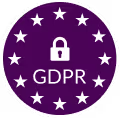Change management isn’t a one-size-fits-all solution. My experience in organizational transformation has shown that a holistic approach is essential for businesses aiming for excellence. I’ve learned that effective change management isn’t just about executing plans; it’s about achieving tangible results. My focus on inspiring excellence through leading change spans from large organizational transformations to individual leadership development. Here’s a deeper dive into the key elements and strategies for successful change management:
The importance of clear goals and measurable outcomes
One of the core principles I emphasize is that change should be driven by clear, measurable outcomes. It’s not enough to follow a change plan; we need to ask, “Did we achieve our business goals?” For instance, in one of my recent projects, we aimed to embed a new reporting portal within a large manufacturing company. The initial perception was that the change would be straightforward. However, as we delved deeper, we realized that the culture of creating endless custom reports needed to be addressed first. In addition, leadership expectations were not clearly set or communicated. As I unpeeled the onion, I saw gaps in role clarity throughout the function that led to the inability to embed the change.
A comprehensive framework for change
Successful change management requires a comprehensive framework that considers the organization, processes, and individuals. I often describe this as a three-layer cake:
- Top layer: Leadership and culture
- The leadership’s vision and the organization’s culture are the driving forces. Leadership must be committed and visible throughout the change process. In my work, I’ve seen that without strong leadership, change efforts often falter.
- Middle layer: Processes and systems
- This includes the organization’s policies, systems, and daily work practices. In the manufacturer project, we had to reassess the reporting processes and align them with the new portal, ensuring everyone understood and adapted to the new way of working.
- Bottom layer: Individual skills and engagement
- Change ultimately happens at the individual level. Understanding what motivates people and addressing skill gaps is crucial. In our case, we needed to provide analytics training to ensure employees could effectively use the standard reports
Flexibility and adaptability in change management
Change is rarely linear. Flexibility is essential. In the reporting portal example, we had to adjust our approach multiple times. Initial resistance came from a culture that valued autonomy in report creation. By engaging with employees through focus groups and feedback loops, we adapted our training and support strategies to meet their needs.
The critical role of courageous leadership
Courageous leadership is a recurring theme in my work. Leaders must be willing to set clear expectations and hold their teams accountable. This involves having difficult conversations and making tough decisions. One of my clients struggled with this, but through executive coaching, we developed their ability to lead with confidence and clarity.
Building trust through communication and feedback
Effective communication and feedback loops are vital. People need to feel heard and valued. In our reporting portal project, we established a robust feedback system. This not only helped us address issues promptly but also built trust and engagement among employees.
Leveraging data for informed decision-making
Data-driven decision-making is at the heart of my approach. Whether it’s through surveys, focus groups, or performance metrics, gathering and analyzing data provides the insights needed to drive successful change. For example, in a North American pharma company, we used employee engagement surveys to track improvements in target culture areas (accountability and innovation), moving the needle significantly in just a few months. I also use a data-driven approach in my neuroscience-based executive coaching, enabling transformative change in less than six months.
A holistic approach to change
Successful change management requires a holistic approach that integrates leadership, processes, and individual engagement. By focusing on clear goals, being adaptable, and fostering courageous leadership, organizations can navigate change effectively and achieve lasting results.
In my journey, I’ve seen the transformative power of this holistic approach. It’s about inspiring excellence and ensuring that every layer of the organization is aligned and engaged in the change process.
This article is part of the Precision Matters series. In the series, HR and L&D leaders share their expert strategies for utilizing Learning & Development tools to craft precise, impactful business outcomes and foster organizational growth.
Ready to turn insights into impact?

















